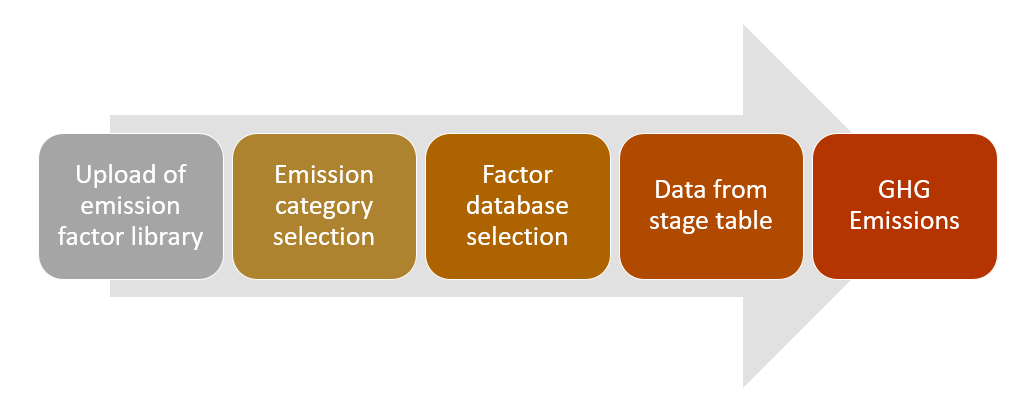Process Overview
The GHG emissions calculator engine is an integral part of the Oracle Financial Services Climate Change Analytics Cloud Service solution. This engine enables users to calculate their greenhouse gas (GHG) emissions across various classifications like Scope 1, 2, and 3 and emissions categories. Logics and formulas used in this engine have been developed based on various industry-leading guidance and standards like The GHG Protocol Corporate Accounting and Reporting Standard and The Global GHG Accounting and Reporting Standard issued by Partnership for Carbon Accounting Financials (PCAF).
Figure 11-1 The GHG Emissions Process

- Upload emission factor library – Users must upload the relevant emissions factors that they want the calculation engine to use for processing purposes at a source level like PCAF, DEFRA, UNFCC, etc. For more details, refer to the MOS page.
- Data from staging tables – Users must provide relevant data elements required to calculate GHG emissions using the Object Store. For more details on the data format and required data elements, please refer MOS page.
- Create user definitions – Users must create a definition at a legal entity level using the Greenhouse Gas Emissions Calculator UI screen. For more details, please refer section on the Greenhouse Gas Emissions Calculator UI screen.
- Calculate GHG Emissions – In this step, users direct the service to execute a run to process data provided and defined user inputs for calculating GHG emissions.
- Reports & Analytics – Output of GHG emissions is then utilized for various visualizing various pre-built dashboards, reports, and metrics using the Oracle Analytics platform.
The following list of emissions categories are currently being supported by this engine:
- Fuels
- Refrigerants
- Owned Transportation
- Electricity
- Heat and Steam
- District Cooling
- Purchased goods and services
- Fuel and energy related activities
- Upstream transportation and distribution
- Waste generated in operations
- Business Travel
- Employee commuting
- Upstream leased assets
- Downstream transportation and distribution
- Downstream leased assets
- Investments
- Emissions Removals
- Avoided Emissions